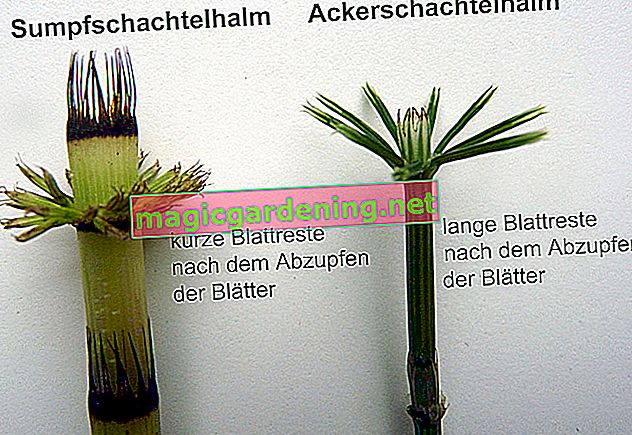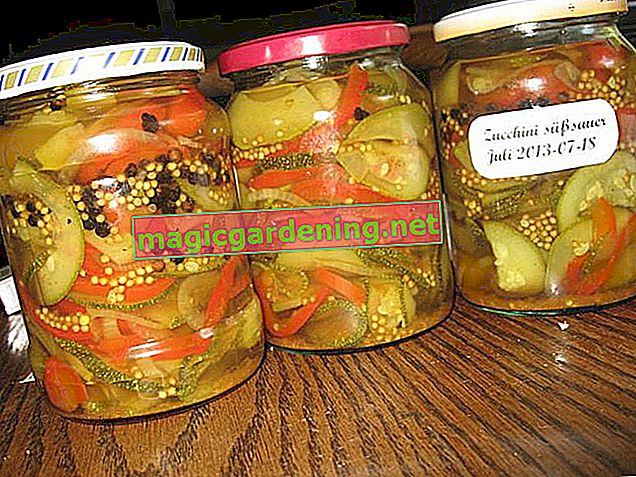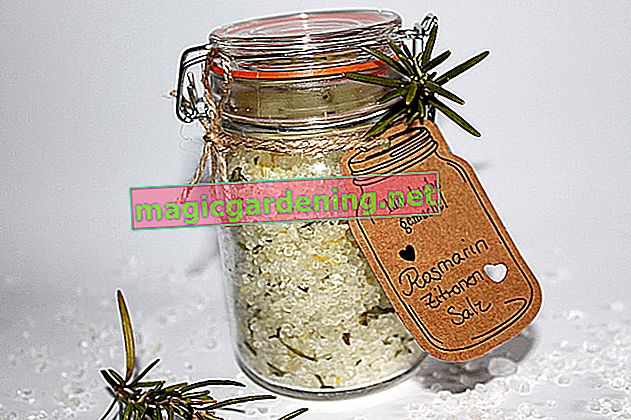
Field horsetail is not poisonous
Since field horsetail or horsetail is not poisonous, it is collected or planted in naturopathy, for use as fertilizer or pesticide in the garden and for cosmetic products.
also read
- The difference between horsetail and marsh horsetail
- Horsetail species for gardens and ponds
- Fight field horsetail
Horsetail can also be used in the kitchen, even if the taste is rather bitter. It only becomes dangerous if you confuse marsh horsetail and horsetail.
If you do not trust yourself to recognize field horsetail and differentiate it from marsh horsetail, it is better not to pick the plants. If necessary, refer to a plant guide for the determination.
Different locations of the two horsetail species
One clue as to whether it is poisonous or non-poisonous horsetail is where the plant grows.
Field horsetail prefers fields and meadows, as the name suggests. But he also likes to spread out in the field and in the lawn.
Marsh horsetail prefers to grow on marshy terrain. You can find the plants near bodies of water. The poisonous species grows on pastures next to depressions in the ground and in places where the water table is very high.
This is how you can see what kind you are looking at
- Color of the sporangia (spore ears)
- Cones on the rungs
- Leaf sheaths
- Stalk
- Color of the leaf axes
In field horsetail, the sporangia stand on brown sprouts, while the sprouts of marsh horsetail are green. If there are brown cones on the sprouts, it is marsh horsetail.
Field horsetail has wider stems. In contrast to the marsh horsetail, they are wider than three millimeters.
Count the prongs of the horsetail leaf sheaths. If there are more than eight, you have non-toxic field horsetail in front of you. In addition, the lower sheaths of the side branches in field horsetail are lighter in color.
The distance between the individual leaf shoots compared to the length of the side shoot sections provides unequivocal information about whether it is a field horsetail or a marsh horsetail. Here you get more information:
YoutubeTips
Marsh horsetail contains the poison palustrine, which is also included in the botanical name. Not only grazing animals such as horses and cows can show signs of poisoning when they are eaten. So be careful when picking.








